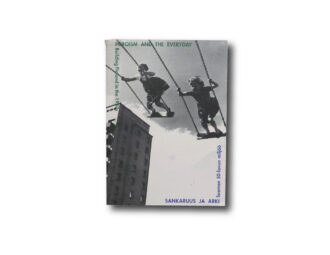“The Art that is Life”: The Arts & Crafts Movement in America, 1875–1920 (Museum of Fine Arts, Boston, 1987) by Wendy Kaplan is a comprehensive study of the American interpretation of Arts & Crafts in art, design, and architecture. The book was published in conjunction with a travelling exhibition of the same title.
The book has contributions by Eileen Boris, W. Scott Braznell, Robert Judson Clark, Edward S. Cooke, Jr., Ellen Paul Denker, Bert Randall Denker, Robert Edwards, Jonathan L. Fairbanks, Sally Buchanan Kinsey, Gillian Moss, Cheryl Robertson, Susan Otis Thompson, Richard Guy Wilson, and Catherine Zusy.
A leading revolutionary a century ago was the Englishman William Morris, whose work as an artist, designer, printer, and intellectual reflected a search for a new social order. he persuaded many of the necessity for change, even if few Americans were converted to his brand of socialism. In a lecture entitled “Art and Beauty of the Earth” given in October 1881, Morris observed degraded humanity on the waterfront outside his window at Hammersmith and detailed with compassion the basic human needs: “I know by my own feelings & desires what these men want, what would gave saved them from the lowest depth of savagery; Employment which would foster their self-respect and win the praise and sympathy of their fellows, and dwellings which they could come to with pleasure, surroundings which would soothe and elevate them; reasonable labour, reasonable rest. there is only one thing that can give them this, and it is art.”
– Curator’s Preface in The Art that is Life: The Arts & Crafts Movement in America, 1875–1920 (Museum of Fine Arts, Boston, 1987), p.viii
The text is in English. The book has been richly illustrated with photographs, art reprints (both in colour and in black-and-white) and other visual archive material.
The copy in our stock is in nice condition. The pages are clean without any markings, and the glueing of the binding is fine. There is some age-related yellowing on the upper edges of the pages, and the covers show some shelf wear and signs of use. The colours printed on the covers and spine are somewhat faded.














